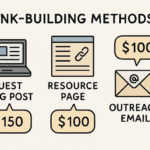Key Takeaways
- Mold is a common indoor problem that can impact property value and health.
- Recognizing the signs of mold early can save you costly repairs later.
- Effective prevention strategies require regular maintenance and attention to humidity levels.
- Professional testing isn’t always necessary, but can be valuable for persistent or hidden mold issues.
- Resources provide helpful information about health risks and DIY tips.
Table of Contents
- Why Mold Grows Indoors
- Health Risks of Mold Exposure
- Early Signs of Mold at Home
- Common Myths About Mold
- Simple Mold Prevention Tips
- Spotting Hidden Mold Issues
- When to Consider Professional Help
- Conclusion
Why Mold Grows Indoors
Mold is one of the most persistent issues homeowners face. It thrives in areas where moisture accumulates and organic materials are present. Bathrooms, kitchens, basements, attics, and any space with poor air circulation are common places for mold to linger. Even a minor water leak or high humidity can create the perfect breeding ground for mold spores to flourish.
Proactive homeowners should regularly look for signs of water damage, condensation, or strange odors. Early intervention can minimize risks to your property and health, so consider seeking mold testing near me if you suspect a problem or have experienced persistent dampness in any area of your home. Addressing issues early is critical, as mold can start growing within 24–48 hours under the right conditions, according to the Centers for Disease Control and Prevention.
Health Risks of Mold Exposure
Mold exposure can affect everyone, but some react more strongly than others. Sensitive groups—children, the elderly, and individuals with allergies or asthma—are more likely to develop symptoms such as stuffy noses, itchy eyes, coughing, or skin irritation. Even in otherwise healthy people, high concentrations of mold can cause respiratory problems or worsen existing health conditions. As the EPA recommends, it’s wise to keep indoor mold levels as low as possible by addressing leaks and controlling humidity.
Regular home maintenance and prompt cleanup after water events play a vital role in reducing the risk of health problems related to mold. In cases where mold exposure leads to persistent symptoms or affects vulnerable members of the household, it’s best to seek medical advice and professional remediation.
Early Signs of Mold at Home
- Musty Odor: A persistent, earthy smell often points to hidden mold, even before it is visible.
- Visible Growth: Look for discolored patches on walls, ceilings, or window sills. Mold can appear in various colors—black, green, white, or orange.
- Condensation: Water droplets frequently found on windows, pipes, or walls indicate excess moisture and potential mold risk.
- Peeling Wallpaper or Paint: Bubbling, cracking, or peeling paint signals moisture problems that may hide mold behind the walls.
Beyond these visible signs, pay attention to unexplained headaches or allergic symptoms that improve after leaving the home, as these could be clues of indoor mold affecting air quality.
Common Myths About Mold
- Mold only grows in old homes: It can develop in any property, new or old, whenever moisture problems are present.
- Bleach kills all mold: While bleach may remove surface mold on non-porous surfaces, it doesn’t penetrate porous materials like drywall or wood, allowing mold to return.
- All mold is toxic: Not all mold is dangerous. Only a few strains produce toxins, but all types can be problematic in sufficient quantities.
Dispelling these myths can help homeowners respond rationally and prioritize effective solutions over unnecessary panic or ineffective treatments.
Simple Mold Prevention Tips
- Maintain household humidity below 60% using dehumidifiers or air conditioning, especially in humid climates.
- Promptly repair leaks from pipes, roofs, or windows to prevent mold growth in hidden areas.
- Ensure kitchens and bathrooms are well-ventilated by running exhaust fans during and after use, particularly when cooking or showering.
- Inspect lesser-used spaces like attics, crawlspaces, and closets regularly for moisture or signs of mold.
- Clean up any spills or flooding within 24–48 hours. Quick action is crucial for stopping mold before it starts.
In addition to these steps, regular home inspections can identify potential risk areas, especially after heavy rain or plumbing incidents. For practical guidance on routine mold prevention, check out the New York Times guide to mold prevention that explores real homeowner experiences and solutions.
Spotting Hidden Mold Issues
Mold doesn’t always present itself in obvious places. It can grow behind walls, above ceiling tiles, inside ductwork, or beneath flooring, escaping typical cleaning and inspection routines. If you notice a persistent musty smell, unexplained spikes in your water bill, or continuous allergy symptoms, a hidden mold problem may be to blame.
Technology like moisture meters and infrared cameras helps identify hidden mold and moisture without damaging your walls or ceilings. These tools can reveal leaks or humid pockets before extensive damage occurs, making them invaluable in ongoing home maintenance.
When to Consider Professional Help
Small areas of mold can usually be cleaned with household solutions and proper drying. However, if the growth is extensive, keeps coming back, or appears in HVAC systems, it’s crucial to get expert assistance. Professionals have specialized equipment for both mold detection and safe removal, and they can also address the underlying causes to prevent recurrence.
In cases of ongoing or severe infestations, prioritizing professional help protects not only your property but also your family’s health. Early action with the right expertise ensures the problem doesn’t spread or worsen over time.
Conclusion
Addressing moisture issues promptly and maintaining proper ventilation are key to keeping mold at bay. Regular inspections, timely repairs, and proactive cleaning can stop minor problems from turning into costly damage. Dehumidifiers, sealing leaks, and controlling indoor humidity levels further reduce risks. Homeowners can act before mold spreads by staying attentive to warning signs such as musty odors or discoloration. This consistent vigilance protects the home’s structure and safeguards the health and comfort of everyone living in the space.
YOU MAY ALSO LIKE: Effortless Curb Appeal: Seasonal Tips to Keep Your Home’s Exterior Looking Sharp All Year



















